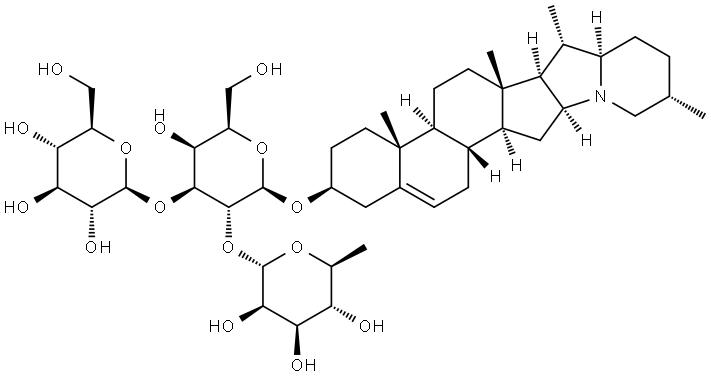This steroidal alkaloid is present in several Solanum species including S. nigrum,
S. Iycopersicum (tomato) and S. tuberosum (potato). The base crystallizes in
slender needles and shrinks markedly at 235°C. It has [α]20D - 59.45° (pyridine)
or - 42.16° (dilute HCl) and is readily soluble in hot EtOH, sparingly so in H20
and virtually insoluble in CHCl 3 or Et2 0. The salts are mostly amorphous
although a crystalline hydrochloride has been prepared with m.p. 212°C (dec.).
It is not affected by alkalies but mineral acids hydrolyze it to solanidine (q.v.)
and one mole each of dextrose, galactose and rhamnose.
Pharmacologically, the alkaloid is a protoplasmic poison and a powerful
haemolytic. Poisoning by potatoes sometimes occurs although the results are not
usually fatal. The symptoms are nausea, headache, emesis and gastritis. With
large doses parenchymatous nephritis and haemoglobinuria occurs with, at times,
paralysis of the central nervous system and cardiac arrest. The alkaloid also
possesses local irritant properties.

